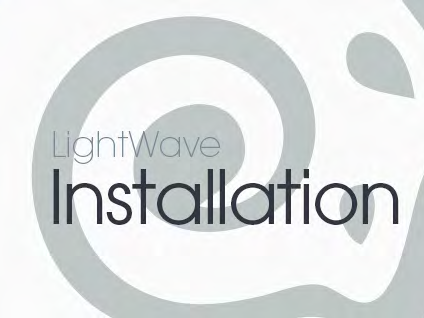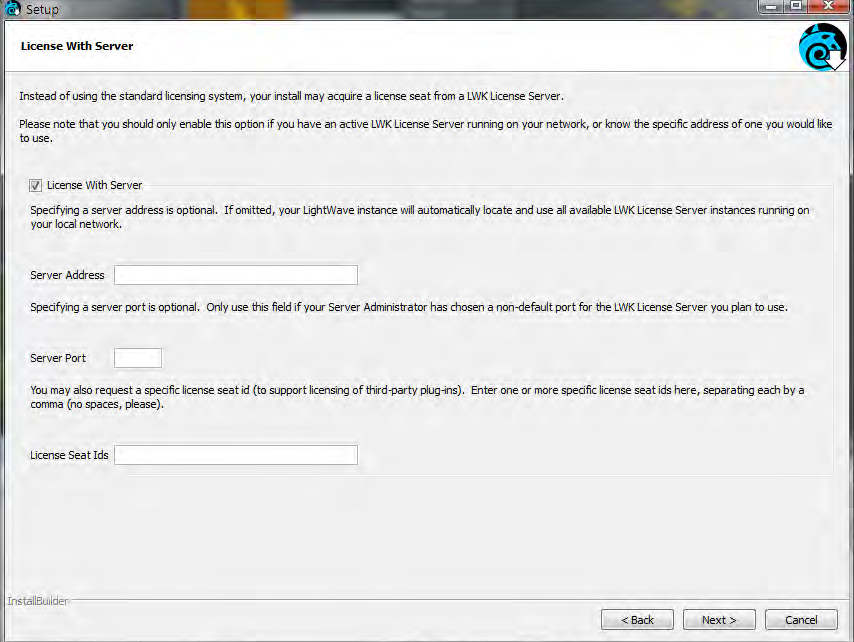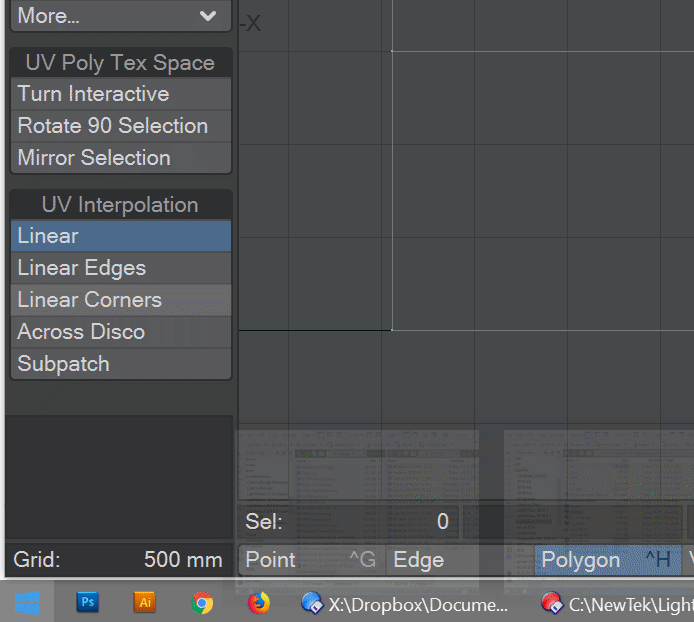Installing LightWave
- Windows
System Requirements
- Hardware
64-bit
Intel® Core™ 2 or better or AMD64 with SSE4 instruction set (Bulldozer onwards)
System RAM: 4 GB minimum
- Operating System
Windows 7 64-bit or better
- Graphics Card
NVIDIA® GeForce® 9 series or ATI Radeon HD 4000 series (minimum) Minimum Screen Resolution: 1280 x 1024 pixels
Recommended Graphics card: GeForce 10 series or newer at 1920 x 1080 or better
Upgrading From a Prior Version
Those upgrading from an older version of LightWave 3D may have a USB hardware key (or parallel key on Windows systems), also known as a "dongle". LightWave no longer requires a hardware key, but you may still find one useful at times (as, for example, if you freelance at a firm with strict network policies).
Otherwise, the same installation instructions apply for an upgrade as for new users. The installation program will not delete any existing objects, scenes, or images on your system unless an existing item has the same name and is in the same directory as an item that LightWave 2019 installs. For this reason, you should install LightWave 2019 in a new directory.
NewTek strongly recommends that you backup your system before you install LightWave 3D.
Software Installation
Download and install the most recent version of LightWave for which you have a license here: https://www.lightwave3d.com/account/. If you don’t already have an account you can download the trial version found here: https://www.lightwave3d.com/try_lightwave/ and then create one.
Installation Options
After accepting the EULA, you will be asked what type of installation you wish to perform. Choose the Render node entry if this installation is intended exclusively for rendering, rather than creating LightWave assets.
LightWave asks whether you wish to expand the Python runtime library. Users not interested in scripting can ignore this option. The file extensions option is checked by default and should be unchecked only if you are running multiple versions of LightWave. The Network Render Controller advanced options let you choose between an explicitly-launched Task Tray application or a Windows service at startup. The fourth question pertains to how your machine will be identified for network rendering.
Legacy Plugins
LightWave has a long and rich history and many plugins from that history. If you find yourself needing a legacy plugin for resurrecting an old project or similar, you will find a file called legacy.zip in the support\plugins folder.
Running the Program
LightWave 3D is started the same way as any other program on the particular platform on which it’s installed. LightWave 3D has two major applications that work together: Layout and Modeler. Each program can be started independently; however, you may also access them by clicking the appropriate button on their respective interfaces.
It has been reported that occasionally, the necessary libraries for proper Python use do not get installed. If this is the case for you, installing the following two Microsoft visual c++ re-distributable modules required for pywin32 to work will resolve the problem: https://www.microsoft.com/en-us/download/details.aspx?id=30679 Read more
In the installation are a pair of icons for troubleshooting firewall settings on Windows 10 systems. The two icons labeled Configure are for tech support use and should only be started at the request of NewTek technical support staff. The LightWave folder will no longer be inside the NewTek folder in the Start menu - it will still be installed wherever you put it. Look for "LightWave" directly.



